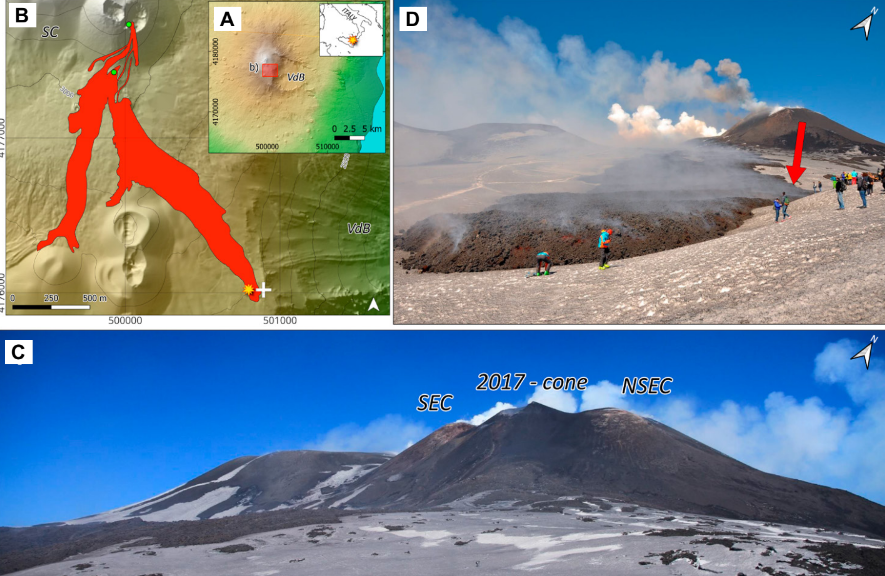Autor Ckelar: Álvaro Aravena
Otros autores: R. Cioni, D. Andronico, L. Cappelli, P. Gabellini, A. Cristaldi, R.A. Corsaro, M. Cantarero,
F. Ciancitto, E. De Beni, and G. Ganci
Revista científica: GSA Bulletin
Abstract
Volcanic hazards associated with lava flows advancing on snow cover are often underrated, although sudden explosions related to different processes of lava-snow/ice contact can occur rapidly and are only pre-ceded by small, easily underrated precursors.
On 16 March 2017, during a mildly effusive and explosive eruption at Mount Etna, Italy, a slowly advancing lava lobe interacted with the snow cover to produce a sudden, brief sequence of explosions.
White vapor, brown ash, and coarse material were suddenly, and the products struck a group of people, injuring some of them. The proximal deposit formed a continuous mantle of ash, lapilli, and decimeter-sized bombs, while the ballistic material travelled up to 200 m from the lava edge. The deposit was estimated to have a mass of 7.1 ± 0.8 × 104 kg, which corresponds to a volume of 32.0 ± 3.6 m3 of
lava being removed by the explosion. Data related to the texture and morphology of the ejected clasts were used to constrain a model of lava-snow interaction. The results suggest that the mechanism causing the explosions was the progressive build-up of pressure due to vapor accumulation under the lava flow, while no evidence was found for the occurrence of fuel-coolant interaction processes.
Although these low-intensity explosions are not particularly frequent, the data set col- lected provides for the first time, quantita- tive information about the processes involvedand the associated hazard and suggests that mitigation measures should be established to prevent potentially dramatic accidents at
worldwide volcanoes frequented by tourists and with fairly easy access, such as Etna.

